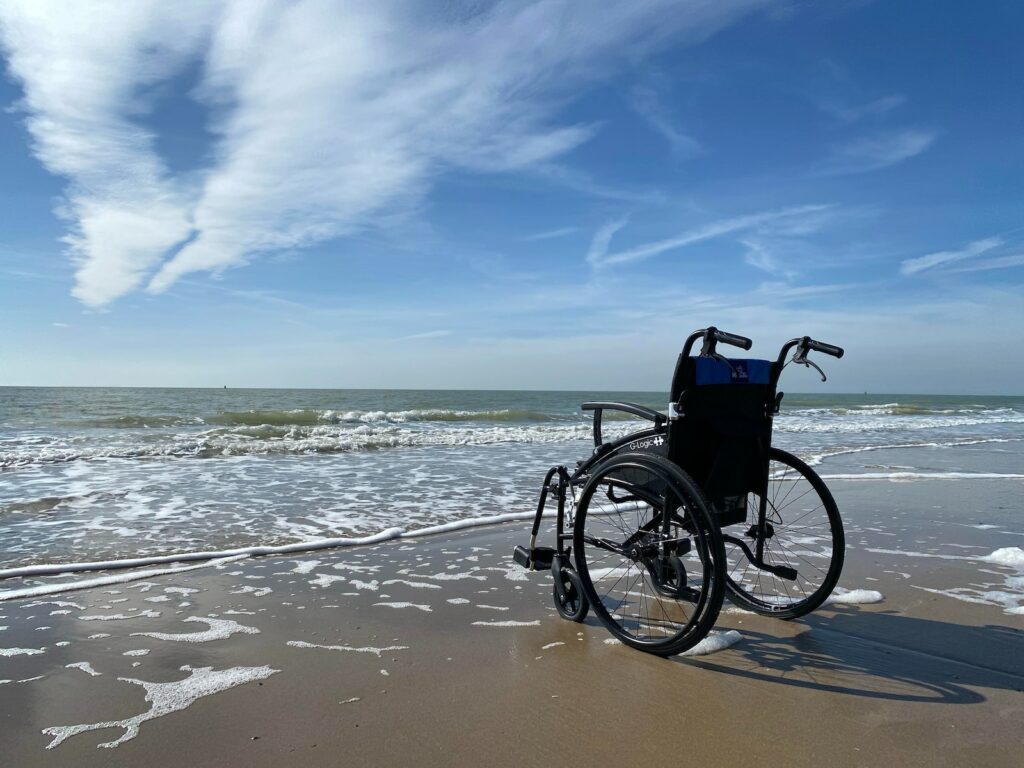
Traveling can be a fun and exciting experience, but for individuals with disabilities or mobility challenges, it can present unique obstacles. Fortunately, there are numerous resources and tips available to help make travel more accessible for everyone.
One helpful resource is AbleThrive, which aggregates support resources for individuals with disabilities. Their website covers a wide range of topics related to living with a disability, including healthcare, parenting, employment, relationships, and travel. AccessibleGO is another useful resource that provides information on accessible travel destinations, accommodations, and transportation options.
When planning a trip, it’s important to call ahead and inform service providers of any special needs or accommodations that may be required. Many providers are required by law to accommodate travelers with disabilities, but they may need some time to make the necessary arrangements. It’s also a good idea to consult with a travel agent or the Transportation Security Administration’s helpline for travelers with disabilities to learn about specific requirements and services available during the trip.
Understanding Accessibility
What is Accessible Travel?
Accessible travel refers to travel that is designed to be inclusive and accommodating for people with disabilities or mobility challenges. This includes wheelchair users, people with physical disabilities, and individuals with autism or other sensory disabilities. Accessible travel aims to provide equal access to transportation, accommodations, and tourist attractions, so that everyone can enjoy the benefits of travel.
Why is Accessibility Important?
Accessibility is important because it allows people with disabilities or mobility challenges to participate fully in society. Travel is an important part of life, and everyone should have the opportunity to explore new places and cultures. Accessible travel ensures that people with disabilities can enjoy the same experiences as everyone else, without facing unnecessary barriers.
The Americans with Disabilities Act (ADA)
The Americans with Disabilities Act (ADA) is a federal law that prohibits discrimination against people with disabilities in all areas of public life, including travel. The ADA requires that all public accommodations, including hotels, restaurants, and transportation services, be accessible to people with disabilities. This means that businesses must make reasonable modifications to their policies and procedures to ensure that people with disabilities can access their services.
The ADA also requires that new construction and alterations to existing buildings be designed to be accessible to people with disabilities. This includes features such as wheelchair ramps, accessible parking, and accessible bathrooms. The ADA has helped to improve accessibility in many areas of public life, including travel, and has made it easier for people with disabilities to participate fully in society.
Overall, accessibility is an important aspect of travel that should not be overlooked. By making travel more accessible, we can ensure that everyone has the opportunity to explore new places and cultures, regardless of their abilities or mobility challenges.
Planning Your Accessible Trip
Traveling with a disability or mobility challenge requires some extra planning and preparation. Here are some tips to help you plan your accessible trip.
Researching Your Destination
Before you book your trip, it’s important to research your destination to ensure that it can accommodate your accessibility requirements. Look for information on accessible transportation, attractions, restaurants, and accommodations. You can use travel resources such as the ones listed in the search results to help you find information on accessible travel.
Booking Accessible Accommodations
When booking accommodations, make sure to ask about accessibility requirements such as grab bars, wheelchair accessibility, and accessible lavatories. You can also use websites like Airbnb or accessible journey companies to find accommodations that meet your needs.
Transportation Options
Research transportation options ahead of time to ensure that they can accommodate your accessibility needs. Look for accessible transportation options such as buses or trains with wheelchair ramps, and accessible taxis or rideshare services. Some tour operators and travel agents specialize in accessible tours, which can be a great option for travelers with disabilities.
Travel Tips for Travelers with Disabilities
Here are some additional travel tips for travelers with disabilities or mobility challenges:
- Call ahead to attractions and restaurants to ensure that they can accommodate your accessibility needs.
- Pack any necessary medical equipment such as scooters or walkers.
- If you’re traveling by plane, notify the airline of any special needs or accessibility requirements ahead of time.
- When booking a cruise, research the accessibility of the ship and the ports of call.
- Research routes and sidewalks ahead of time to ensure that they are accessible.
- Look for accessible tours or tour guides to help you navigate your destination.
By taking the time to plan ahead and research your destination, you can ensure that your trip is enjoyable and accessible.
Accessible Activities and Tours
Traveling with disabilities or mobility challenges doesn’t mean you have to miss out on exciting activities and tours. Many destinations offer accessible options, making it possible for everyone to enjoy the experience. Here are some accessible activities and tours to consider:
Accessible Tours
Many tour companies offer accessible tours, providing a great way to explore a new destination. These tours cater to travelers with disabilities and mobility challenges, ensuring that everyone can participate in the experience. Some popular tour companies that offer accessible tours include AccessibleGO, Wheel the World, and Iceland Unlimited.
Accessible Cruises
Cruising is a popular way to travel, and many cruise lines offer accessible options. These ships have accessible cabins, ramps, and elevators, making it easier for travelers with disabilities or mobility challenges to get around. Some popular cruise lines that offer accessible options include Royal Caribbean, Carnival, and Norwegian Cruise Line.
Accessible Beaches and Water Activities
Beaches and water activities are a great way to enjoy the outdoors, and many destinations offer accessible options. Some beaches have beach wheelchairs available, allowing travelers with disabilities or mobility challenges to enjoy the sand and water. Some popular destinations with accessible beaches and water activities include Miami Beach, California, and Hawaii.
Accessible Museums and Attractions
Museums and attractions are a great way to learn about a new destination, and many offer accessible options. Some museums have accessible entrances, elevators, and exhibits, making it easier for travelers with disabilities or mobility challenges to enjoy the experience. Some popular museums and attractions with accessible options include the Smithsonian museums in Washington, DC, and the Metropolitan Museum of Art in New York City.
In addition to these accessible options, some destinations offer scuba diving for travelers with disabilities. Scuba diving can be a thrilling experience, and many organizations offer adaptive scuba diving programs. These programs provide specialized equipment and training, allowing travelers with disabilities or mobility challenges to explore the underwater world.
Overall, there are many accessible activities and tours available for travelers with disabilities or mobility challenges. With a little research and planning, you can find the perfect experience for your next trip.
Service Animals and Mobility Aids
When traveling with a disability or mobility challenge, it’s important to know your rights and what to expect when it comes to service animals and mobility aids. Here are some tips and resources to help you navigate the process.
Service Animals
Service animals are trained to perform specific tasks for individuals with disabilities, such as guiding a person who is blind, alerting a person who is deaf, or providing assistance with mobility or medical needs. If you have a service animal, here are some things to keep in mind when traveling:
- Check with your airline to ensure that your service animal meets the airline’s requirements, including necessary documentation.
- Contact your destination country’s nearest embassy or consulate for information on possible legal restrictions, accessibility issues, or cultural norms that may affect your travel with your service animal.
- Be aware that some countries may have different rules regarding service animals, and it’s important to research these rules in advance to avoid any issues.
Mobility Aids
Mobility aids, such as wheelchairs, scooters, and walkers, can be critical for individuals with mobility challenges. When traveling with a mobility aid, here are some tips to keep in mind:
- Check with your airline to ensure that your mobility aid can be accommodated on the plane and that any necessary arrangements are made in advance.
- Consider bringing a backup mobility aid or repair kit in case of any issues.
- Be aware that some destinations may have limited accessibility, and it’s important to research these issues in advance to avoid any surprises.
Remember, it’s important to advocate for yourself and your needs when traveling with a disability or mobility challenge. With the right preparation and knowledge, you can have a safe and enjoyable trip.
